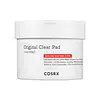What's inside
What's inside
 Key Ingredients
Key Ingredients

 Benefits
Benefits

 Concerns
Concerns

 Ingredients Side-by-side
Ingredients Side-by-side

Water
Skin ConditioningGlycerin
HumectantCetearyl Alcohol
EmollientCI 77004
Cosmetic ColorantEthylhexyl Palmitate
EmollientPropanediol
SolventTitanium Dioxide
Cosmetic Colorant1,2-Hexanediol
Skin ConditioningArtemisia Absinthium Extract
Skin ConditioningZea Mays Starch
AbsorbentCamellia Sinensis Leaf Powder
ExfoliatingChlorella Vulgaris Extract
Skin ConditioningCentella Asiatica Leaf Extract
Skin ConditioningSodium Hyaluronate
HumectantMoroccan Lava Clay
AbrasiveButylene Glycol
HumectantSodium Bicarbonate
AbrasiveEnantia Chlorantha Bark Extract
Skin ConditioningGluconolactone
Skin ConditioningSuccinic Acid
BufferingGlyceryl Glucoside
HumectantCynanchum Atratum Extract
Skin ConditioningAlthaea Rosea Flower Extract
Skin ConditioningHydroxystearic Acid
CleansingGlucose
HumectantBeta-Glucan
Skin ConditioningTocopherol
AntioxidantCaprylyl Glycol
EmollientEthylhexylglycerin
Skin ConditioningSodium Cocoyl Isethionate
CleansingSilica
AbrasiveFructooligosaccharides
HumectantFructose
HumectantGlyceryl Stearate Se
EmulsifyingHydrogenated Lecithin
EmulsifyingCeramide NP
Skin ConditioningOleanolic Acid
Skin ConditioningTromethamine
BufferingGellan Gum
Caprylic/Capric Triglyceride
MaskingTetrasodium Pyrophosphate
BufferingSodium Phytate
Caffeine
Skin ConditioningCarbomer
Emulsion StabilisingSodium Stearoyl Glutamate
CleansingAcrylates/C10-30 Alkyl Acrylate Crosspolymer
Emulsion StabilisingMelaleuca Alternifolia Leaf Oil
AntioxidantWater, Glycerin, Cetearyl Alcohol, CI 77004, Ethylhexyl Palmitate, Propanediol, Titanium Dioxide, 1,2-Hexanediol, Artemisia Absinthium Extract, Zea Mays Starch, Camellia Sinensis Leaf Powder, Chlorella Vulgaris Extract, Centella Asiatica Leaf Extract, Sodium Hyaluronate, Moroccan Lava Clay, Butylene Glycol, Sodium Bicarbonate, Enantia Chlorantha Bark Extract, Gluconolactone, Succinic Acid, Glyceryl Glucoside, Cynanchum Atratum Extract, Althaea Rosea Flower Extract, Hydroxystearic Acid, Glucose, Beta-Glucan, Tocopherol, Caprylyl Glycol, Ethylhexylglycerin, Sodium Cocoyl Isethionate, Silica, Fructooligosaccharides, Fructose, Glyceryl Stearate Se, Hydrogenated Lecithin, Ceramide NP, Oleanolic Acid, Tromethamine, Gellan Gum, Caprylic/Capric Triglyceride, Tetrasodium Pyrophosphate, Sodium Phytate, Caffeine, Carbomer, Sodium Stearoyl Glutamate, Acrylates/C10-30 Alkyl Acrylate Crosspolymer, Melaleuca Alternifolia Leaf Oil
 Reviews
Reviews

Ingredients Explained
These ingredients are found in both products.
Ingredients higher up in an ingredient list are typically present in a larger amount.
1,2-Hexanediol is a synthetic liquid and another multi-functional powerhouse.
It is a:
- Humectant, drawing moisture into the skin
- Emollient, helping to soften skin
- Solvent, dispersing and stabilizing formulas
- Preservative booster, enhancing the antimicrobial activity of other preservatives
Butylene Glycol (or BG) is used within cosmetic products for a few different reasons:
Overall, Butylene Glycol is a safe and well-rounded ingredient that works well with other ingredients.
Though this ingredient works well with most skin types, some people with sensitive skin may experience a reaction such as allergic rashes, closed comedones, or itchiness.
Learn more about Butylene GlycolGlycerin is already naturally found in your skin. It helps moisturize and protect your skin.
A study from 2016 found glycerin to be more effective as a humectant than AHAs and hyaluronic acid.
As a humectant, it helps the skin stay hydrated by pulling moisture to your skin. The low molecular weight of glycerin allows it to pull moisture into the deeper layers of your skin.
Hydrated skin improves your skin barrier; Your skin barrier helps protect against irritants and bacteria.
Glycerin has also been found to have antimicrobial and antiviral properties. Due to these properties, glycerin is often used in wound and burn treatments.
In cosmetics, glycerin is usually derived from plants such as soybean or palm. However, it can also be sourced from animals, such as tallow or animal fat.
This ingredient is organic, colorless, odorless, and non-toxic.
Glycerin is the name for this ingredient in American English. British English uses Glycerol/Glycerine.
Learn more about GlycerinThis tea tree oil comes from the leaves of the Tea Tree plant. Tea tree oil has antioxidant, anti-inflammatory, and antimicrobial properties.
According to the book Journal of Profiles of Drug Substances, tea tree helps in reducing acne-causing bacteria such as Propionibacterium acnes. This is due to the Terpinen components of tea tree oil.
Tea tree may cause sensitivity and irritation for some people. This oil naturally contains fragrance such as linalool and limonene.
However, research shows irritation usually occurs when using pure tea tree oil and not in cosmetic products.
Tea tree oil was found to help relieve the symptoms of psoriasis in one study.
Tea tree oil is toxic when ingested. Another study showed it to caused damage to the nervous system of dogs and cats when applied to their skin or given orally.
Learn more about Melaleuca Alternifolia Leaf OilSodium Hyaluronate is hyaluronic acid's salt form. It is commonly derived from the sodium salt of hyaluronic acid.
Like hyaluronic acid, it is great at holding water and acts as a humectant. This makes it a great skin hydrating ingredient.
Sodium Hyaluronate is naturally occurring in our bodies and is mostly found in eye fluid and joints.
These are some other common types of Hyaluronic Acid:
Learn more about Sodium Hyaluronate